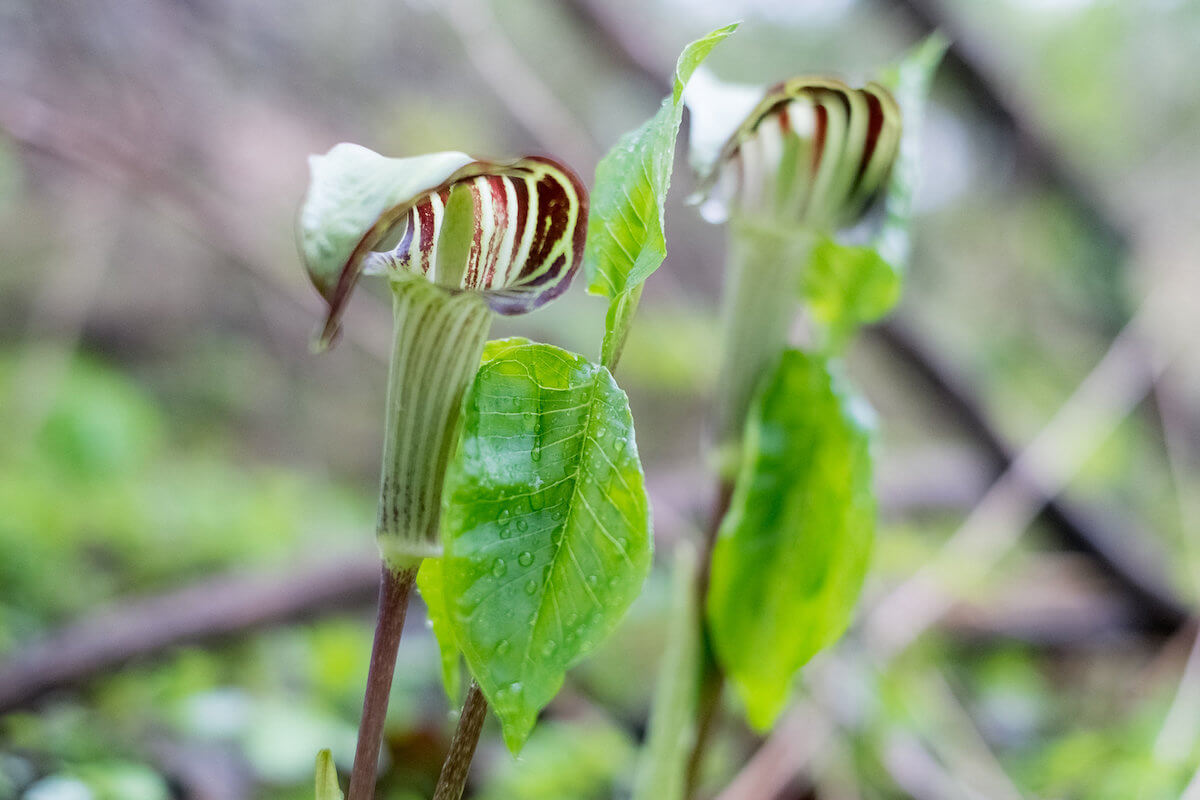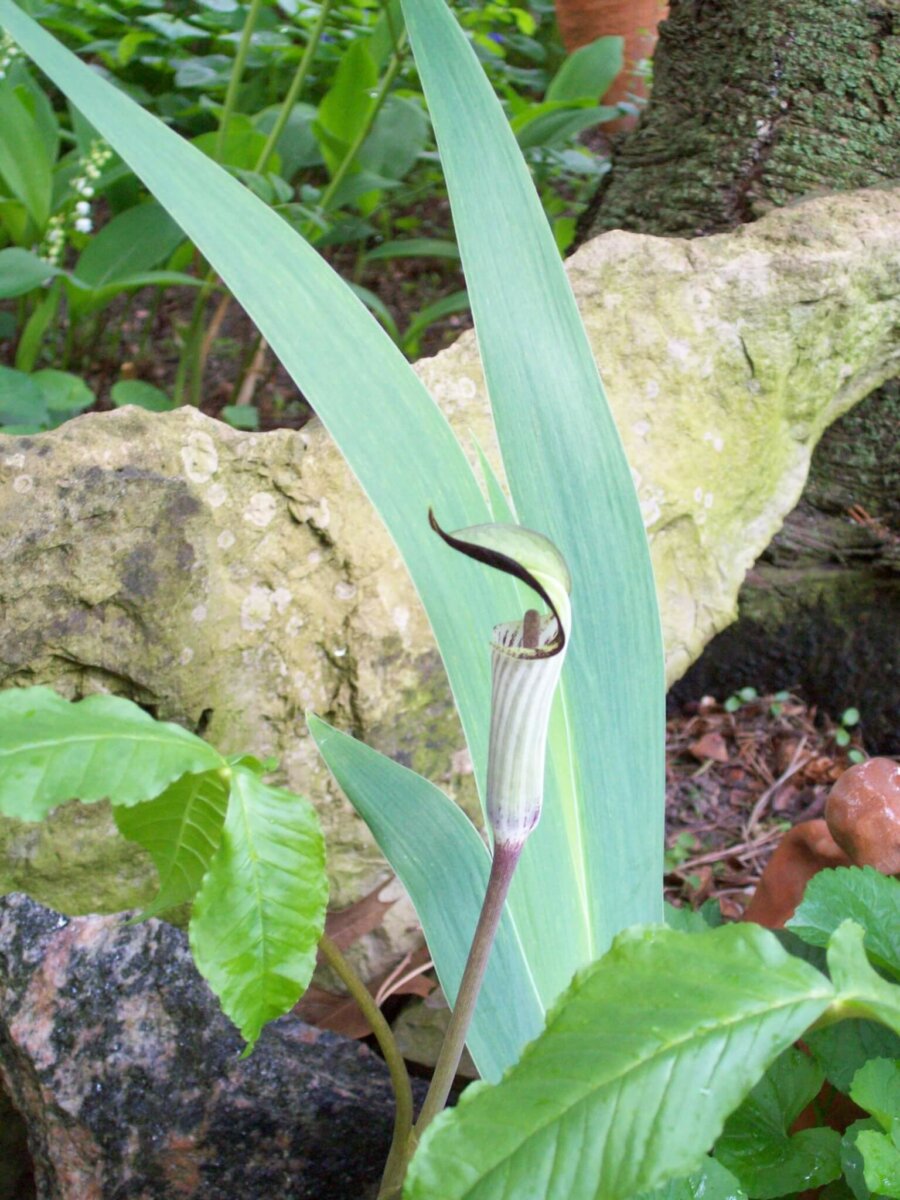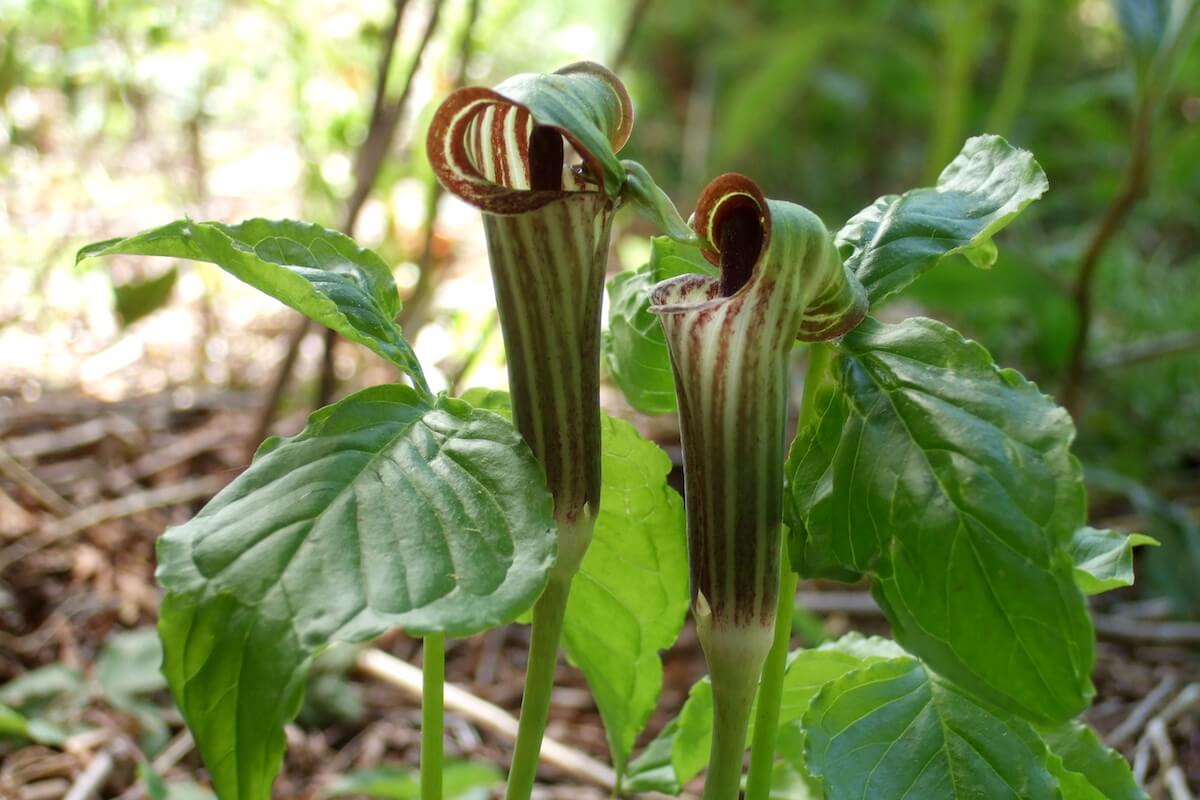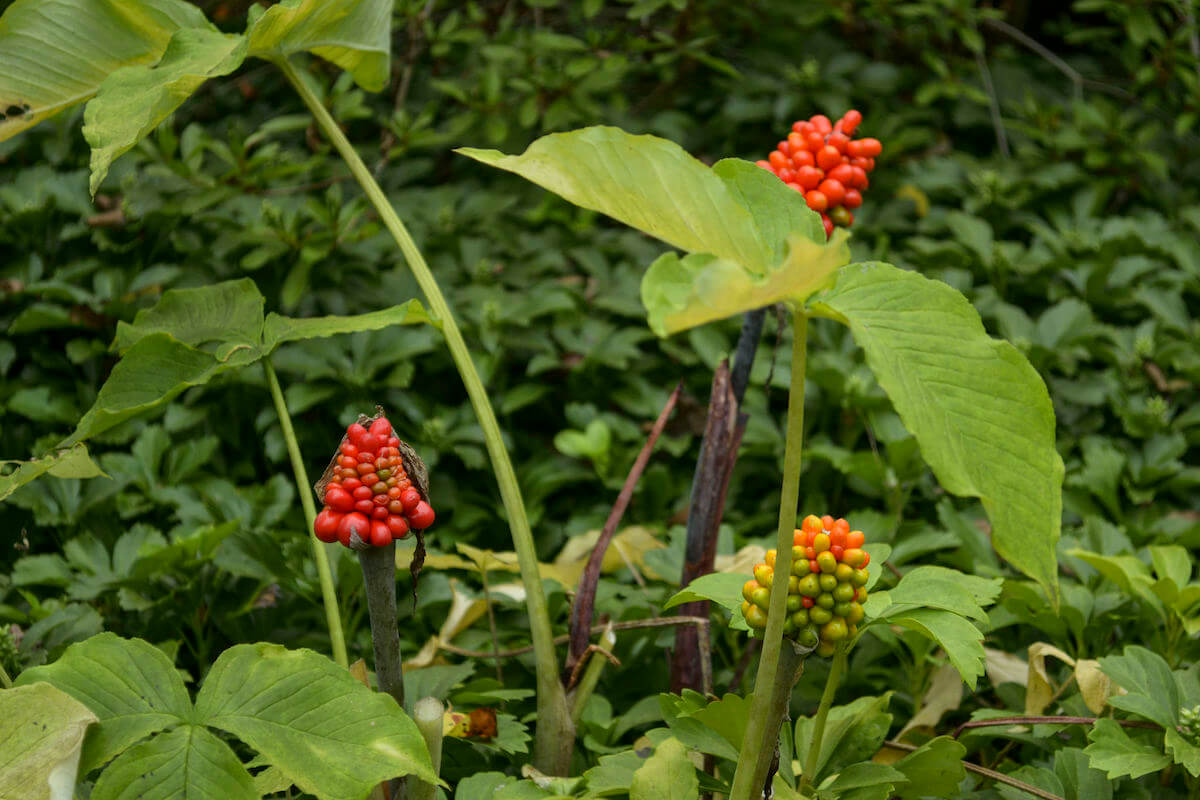Growing up in the 1960s, just about everyone in my class at school went to church, and most churches were similar in layout, including, at the front by the choir, a pulpit. So, when the lessons turned to studying the wildflowers of Ontario, the one plant which captured our attention was the Jack-in-the-pulpit.
The teacher described the plant, comparing its look to that of a church pulpit. Needless to say, everyone in the class was able to recognize this plant and remember the name. Not so much for many of the other wildflowers we studied.

I think it was the name that always captured my attention. A plant named Jack-in-the-pulpit? Seems like a strange name, but when one looks closely at this rather small, woodland wildflower, which makes a brief appearance every spring, it makes sense.
The flower arches like a hood over a pouch-shaped spathe (which looks like a church pulpit). Inside this “pulpit” is the central spadix (Jack) that looks like a figure, or finger, standing up. The entire flower brings to mind the beauty of classic church architecture that presents the pulpit as a place of prominence where the minister or priest stands to give his homily.
Part of the Arisaema triphyllum family, this herbaceous perennial plant is also known as bog onion, brown dragon, Indian turnip, American wake-robin, or wild turnip. I prefer its classic name: Jack-in-the-pulpit.
When I purchased my country property in central Canada, I hoped to find a large crop of Jack-in-the-pulpits scattered around my tiny forest lot. Having cleared the wooded area, I was hopeful the following spring. I was out of luck. No Jack-in-the-pulpit. Fortunately, I had one from my old house in town.

At a heritage plant sale years earlier, I had purchased one Jack-in-the-pulpit and planted it in a shady, bushy corner of my tiny lot. It had done well, but it hadn’t propagated. I figured it needed a woody country plot just as I did. So, I dug it up again and found the perfect location on my new property. Seven years later, it has finally propagated, invading the space of other plants in the vicinity with more Jack-in-the-pulpits. I have great hopes for my Jack-in-the-pulpit.
Until the flower appears, I have to be careful I don’t accidentally dig up the plant. It’s another trifoliate. In other words, the leaves are in groups of threes, much like the lesser appreciated wildflower known as poison ivy. When the plant starts to appear, it does mysteriously look like poison ivy, something I don’t want taking over my garden or anywhere else on my property.

I keep a mental note of where my Jack-in-the-pulpit resides in the garden and allow it time to flower, which it does sometimes as early as April. Once the spathe, or the pulpit, appears—wrapping around and covering over the spadix, or “Jack”—I know I have my cherished Jack-in-the-pulpit and not poison ivy.
I’m always amazed at the cluster of flies that are attracted to the flower. Apparently, it’s the smell that attracts the flies, and the flies, that in turn, pollinate the plant. Which is a good thing, because I do want more. However, I have to be careful when a possible new Jack-in-the-pulpit appears in a different part of the garden. It might be poison ivy, so I have to wait and watch and hope for the best.
After the flowering season finishes, the berries appear in clusters on the thickened spadix. The fruit ripens during the late summer and fall, turning a bright red color. The berries, of course, contain the seeds. They are flat, white seeds that look something like green pepper seeds.

Each berry may contain only one seed or as many as five seeds. In order to germinate, however, the seeds need to be freed from the berry. If that’s not happening naturally, come late fall, I crush the berries and allow the seeds to spread and hope for a new crop the next spring. It takes a few years for a new Jack-in-the-pulpit to flower, usually about three years.
Every spring I look for my treasured wildflower, and I know it’s spring when Jack stands in his pulpit for the world to see (well, at least my world). But, other than its unique look, what is so special about this plant? Folklore has some interesting stories.
https://www.instagram.com/p/BiyGf0iA_RP/?tagged=jackinthepulpit
Historically, the Jack-in-the-pulpit tells an interesting story. The First Nations (Native Americans) would harvest the corm, chop it up and mix it with meat. Then they left it out for their enemies to consume. It was definitely a deceptive weapon with dire consequences. The taste of the corm would go unnoticed, but the result of consuming raw Jack-in-the-pulpit corm is always uncomfortable at best.
The plant is full of calcium oxalate crystals. Consumption results in a strong burning sensation, irritation in the mouth and digestive system and sometimes swelling in the mouth and throat making breathing difficult. It’s definitely not something you want to add to a wildflower salad. However, if the plant is dried and cooked, apparently it can be eaten as a root vegetable.
Medicinally, the Jack-in-the-pulpit was used by the First Nations (Native Americans) to treat certain ailments. Once again, properly prepared by peeling, chopping and cooking for at least an hour, the root of the plant was used as a treatment for sore eyes, rheumatism, bronchitis, and snakebites.
https://www.instagram.com/p/BjXC_ENDsm1/?tagged=jackinthepulpit
I have no personal interest in consuming the plant or making use of its medicinal qualities. I enjoy the beauty of this unique wildflower. It’s my banner that announces spring has finally arrived. With my wooded area, moist soil with good drainage, I have the ideal setting for Jack-in-the-pulpit. I keep hoping that each spring I will see more Jack-in-the-pulpits standing tall and proud among my irises, lilies, and hostas.









































Fascinating history and I love your personal relationship with Jack.
I live in the Kootenays in BC and I have one. One. I don’t remember how old he is but quite. I removed a large perennial garden last fall, hiring a small excavator. I’d completely forgotten about Jack and didn’t think to save him while I potted my favourite perennials to place in the rebuilt spring garden.
By complete luck, he was in a stack of scrapings this spring and, not being sure if he was a weird lily or whatever else, I plunked him in a spot with a flag to mark the spot to watch. I had a feeling that it was Jack.
Three weeks later, he has popped up and I’m so relieved that I didn’t lose him.
Now for propagating more. I’ll collect seeds and give it a try. Three years? That’s a long time for an impatient gardener like myself but thanks for your story.
Chris in Nakusp BC